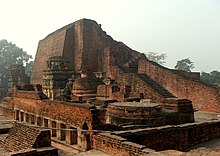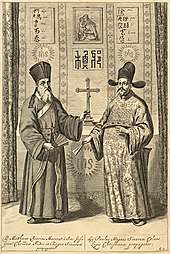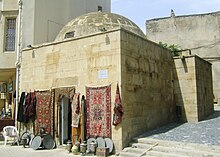Educationdisambigationtechnical. Com
Education

Lecture at the Faculty of Biomedical Engineering, Czech Technical University, in Prague, Czech Republic

School children sitting in the shade of an orchard in Bamozai, near Gardez, Paktya Province, Afghanistan

Student participants in the FIRST Robotics Competition, Washington, D.C.
Education is the process of facilitating learning, or the acquisition of knowledge, skills, values, beliefs, and habits. Educational methods include teaching, training, storytelling, discussion and directed research. Education frequently takes place under the guidance of educators, however learners can also educate themselves.[1] Education can take place in formal or informal settings and any experience that has a formative effect on the way one thinks, feels, or acts may be considered educational. The methodology of teaching is called pedagogy.
Formal education is commonly divided formally into such stages as preschool or kindergarten, primary school, secondary school and then college, university, or apprenticeship.
A right to education has been recognized by some governments and the United Nations.[2] In most regions, education is compulsory up to a certain age. There is a movement for education reform, and in particular for evidence-based education.
Etymology
History

Nalanda, ancient centre for higher learning
Education began in prehistory, as adults trained the young in the knowledge and skills deemed necessary in their society. In pre-literate societies, this was achieved orally and through imitation. Story-telling passed knowledge, values, and skills from one generation to the next. As cultures began to extend their knowledge beyond skills that could be readily learned through imitation, formal education developed. Schools existed in Egypt at the time of the Middle Kingdom.[4]

Matteo Ricci (left) and Xu Guangqi (right) in the Chinese edition of Euclid's Elements published in 1607
Plato founded the Academy in Athens, the first institution of higher learning in Europe.[5] The city of Alexandria in Egypt, established in 330 BCE, became the successor to Athens as the intellectual cradle of Ancient Greece. There, the great Library of Alexandria was built in the 3rd century BCE. European civilizations suffered a collapse of literacy and organization following the fall of Rome in CE 476.[6]
In China, Confucius (551–479 BCE), of the State of Lu, was the country's most influential ancient philosopher, whose educational outlook continues to influence the societies of China and neighbours like Korea, Japan, and Vietnam. Confucius gathered disciples and searched in vain for a ruler who would adopt his ideals for good governance, but his Analects were written down by followers and have continued to influence education in East Asia into the modern era.[7]
The Aztecs also had a well-developed theory about education, which has an equivalent word in Nahuatl called tlacahuapahualiztli. It means "the art of raising or educating a person"[8] or "the art of strengthening or bringing up men."[9] This was a broad conceptualization of education, which prescribed that it begins at home, supported by formal schooling, and reinforced by community living. Historians cite that formal education was mandatory for everyone regardless of social class and gender.[10] There was also the word neixtlamachiliztli, which is "the act of giving wisdom to the face."[9] These concepts underscore a complex set of educational practices, which was oriented towards communicating to the next generation the experience and intellectual heritage of the past for the purpose of individual development and his integration into the community.[9]
After the Fall of Rome, the Catholic Church became the sole preserver of literate scholarship in Western Europe.[11] The church established cathedral schools in the Early Middle Ages as centres of advanced education. Some of these establishments ultimately evolved into medieval universities and forebears of many of Europe's modern universities.[6] During the High Middle Ages, Chartres Cathedral operated the famous and influential Chartres Cathedral School. The medieval universities of Western Christendom were well-integrated across all of Western Europe, encouraged freedom of inquiry, and produced a great variety of fine scholars and natural philosophers, including Thomas Aquinas of the University of Naples, Robert Grosseteste of the University of Oxford, an early expositor of a systematic method of scientific experimentation,[12] and Saint Albert the Great, a pioneer of biological field research.[13] Founded in 1088, the University of Bologne is considered the first, and the oldest continually operating university.[14]
Elsewhere during the Middle Ages, Islamic science and mathematics flourished under the Islamic caliphate which was established across the Middle East, extending from the Iberian Peninsula in the west to the Indus in the east and to the Almoravid Dynasty and Mali Empire in the south.
The Renaissance in Europe ushered in a new age of scientific and intellectual inquiry and appreciation of ancient Greek and Roman civilizations. Around 1450, Johannes Gutenberg developed a printing press, which allowed works of literature to spread more quickly. The European Age of Empires saw European ideas of education in philosophy, religion, arts and sciences spread out across the globe. Missionaries and scholars also brought back new ideas from other civilizations – as with the Jesuit China missions who played a significant role in the transmission of knowledge, science, and culture between China and Europe, translating works from Europe like Euclid's Elements for Chinese scholars and the thoughts of Confucius for European audiences. The Enlightenment saw the emergence of a more secular educational outlook in Europe.
In most countries today, full-time education, whether at school or otherwise, is compulsory for all children up to a certain age. Due to this the proliferation of compulsory education, combined with population growth, UNESCO has calculated that in the next 30 years more people will receive formal education than in all of human history thus far.[15]
Formal education
Formal education occurs in a structured environment whose explicit purpose is teaching students. Usually, formal education takes place in a school environment with classrooms of multiple students learning together with a trained, certified teacher of the subject. Most school systems are designed around a set of values or ideals that govern all educational choices in that system. Such choices include curriculum, organizational models, design of the physical learning spaces (e.g. classrooms), student-teacher interactions, methods of assessment, class size, educational activities, and more.[16][17]
The International Standard Classification of Education (ISCED) was created by UNESCO as a statistical base to compare education systems.[18]In 1997, it defined 7 levels of education and 25 fields, though the fields were later separated out to form a different project. The current version ISCED 2011 has 9 rather than 7 levels, created by dividing the tertiary pre-doctorate level into three levels. It also extended the lowest level (ISCED 0) to cover a new sub-category of early childhood educational development programmes, which target children below the age of 3 years.[19]
Early childhood education

Young children in a kindergarten in Japan
Education designed to support early development in preparation for participation in school and society. The programmes are designed for children below the age of 3. This is ISCED level 01. [18] Preschools provide education from ages approximately three to seven, depending on the country when children enter primary education. The children now readily interact with their peers and the educator.[18] These are also known as nursery schools and as kindergarten, except in the US, where the term kindergarten refers to the earliest levels of primary education.[20] Kindergarten "provide[s] a child-centred, preschool curriculum for three- to seven-year-old children that aim[s] at unfolding the child's physical, intellectual, and moral nature with balanced emphasis on each of them."[21] This is ISCED level 02. [18]
Primary
This is ISCED level 1. [18] Primary (or elementary) education consists of the first four to seven years of formal, structured education. They are typically designed to provide young children with functional literacy and numeracy skills and to is guaranteed, solid foundation for most areas of knowledge and personal and social development to support the transition to secondary school.[22] In general, primary education consists of six to eight years of schooling starting at the age of five to seven, although this varies between, and sometimes within, countries. Globally, around 89% of children aged six to twelve are enrolled in primary education, and this proportion is rising.[23] Under the Education For All programs driven by UNESCO, most countries have committed to achieving universal enrollment in primary education by 2015, and in many countries, it is compulsory. The division between primary and secondary education is somewhat arbitrary, but it generally occurs at about eleven or twelve years of age. Some education systems have separate middle schools, with the transition to the final stage of secondary education taking place at around the age of fifteen. Schools that provide primary education, are mostly referred to as primary schools or elementary schools. Primary schools are often subdivided into infant schools and junior school.
In India, for example, compulsory education spans over twelve years, with eight years of elementary education, five years of primary schooling and three years of upper primary schooling. Various states in the republic of India provide 12 years of compulsory school education based on a national curriculum framework designed by the National Council of Educational Research and Training.
Secondary
This covers the two ISCED levels, ISCED 2: Lower Secondary Education and ISCED 3: Upper Secondary Education. [18]
In most contemporary educational systems of the world, secondary education comprises the formal education that occurs during adolescence. In the United States, Canada, and Australia, primary and secondary education together are sometimes referred to as K-12 education, and in New Zealand Year 1–13 is used. The purpose of secondary education can be to give common knowledge, to prepare for higher education, or to train directly in a profession.[citation needed]
Secondary education in the United States did not emerge until 1910, with the rise of large corporations and advancing technology in factories, which required skilled workers. In order to meet this new job demand, high schools were created, with a curriculum focused on practical job skills that would better prepare students for white collar or skilled blue collar work. This proved beneficial for both employers and employees, since the improved human capital lowered costs for the employer, while skilled employees received higher wages.[citation needed]
Secondary education has a longer history in Europe, where grammar schools or academies date from as early as the 6th century, [a] in the form of public schools, fee-paying schools, or charitable educational foundations, which themselves date even further back.[citation needed]
It spans the period between the typically universal compulsory, primary education to the optional, selective tertiary, "postsecondary", or "higher" education of ISCED 5 and 6 (e.g. university), and the ISCED 4 Further education or vocational school.[18]
Depending on the system, schools for this period, or a part of it, maybe called secondary or high schools, gymnasiums, lyceums, middle schools, colleges, or vocational schools. The exact meaning of any of these terms varies from one system to another. The exact boundary between primary and secondary education also varies from country to country and even within them but is generally around the seventh to the tenth year of schooling.[citation needed]
Lower secondary education
Programs at ISCED level 2, lower secondary education are usually organized around a more subject-oriented curriculum; differing from primary education. Teachers typically have pedagogical training in the specific subjects and, more often than at ISCED level 1, a class of students will have several teachers, each with specialized knowledge of the subjects they teach. Programmes at ISCED level 2, aim is to lay the foundation for lifelong learning and human development upon introducing theoretical concepts across a broad range of subjects which can be developed in future stages. Some education systems may offer vocational education programs during ISCED level 2 providing skills relevant to employment. [18]
Upper secondary education
Programs at ISCED level 3, or upper secondary education, are typically designed to complete the secondary education process. They lead to skills relevant to employment and the skill necessary to engage in tertiary courses. They offer students more varied, specialized and in-depth instruction. They are more differentiated, with range of options and learning streams. [18]
Community colleges offer another option at this transitional stage of education. They provide nonresidential junior college courses to people living in a particular area.
Tertiary (higher)

Students in a laboratory, Saint Petersburg State Polytechnical University

Universities often host prominent guest speakers for student audiences, e.g. First Lady of the United States Michelle Obama delivering remarks at Peking University, Beijing, China
Higher education, also called tertiary, third stage, or postsecondary education, is the non-compulsory educational level that follows the completion of a school such as a high school or secondary school. Tertiary education is normally taken to include undergraduate and postgraduate education, as well as vocational education and training. Colleges and universities mainly provide tertiary education. Collectively, these are sometimes known as tertiary institutions. Individuals who complete tertiary education generally receive certificates, diplomas, or academic degrees.
The ISCED distinguishes 4 levels of tertiary education. ISCED 6 is equivalent to a first degree, ISCED 7 is equivalent to a masters or an advanced professional qualification and ISCED 8 is an advanced research qualification, usually concluding with the submission and defence of a substantive dissertation of publishable quality based on original research. [24] The category ISCED 5 is reserved for short-cycle courses of requiring degree level study. [24]
Higher education typically involves work towards a degree-level or foundation degree qualification. In most developed countries, a high proportion of the population (up to 50%) now enter higher education at some time in their lives. Higher education is therefore very important to national economies, both as a significant industry in its own right and as a source of trained and educated personnel for the rest of the economy.
University education includes teaching, research, and social services activities, and it includes both the undergraduate level (sometimes referred to as tertiary education) and the graduate (or postgraduate) level (sometimes referred to as graduate school). Some universities are composed of several colleges.
One type of university education is a liberal arts education, which can be defined as a "college or university curriculum aimed at imparting broad general knowledge and developing general intellectual capacities, in contrast to a professional, vocational, or technical curriculum."[25] Although what is known today as liberal arts education began in Europe,[26] the term "liberal arts college" is more commonly associated with institutions in the United States such as Williams College or Barnard College.[27]
Vocational

Carpentry is normally learned through apprenticeship with an experienced carpenter
Vocational education is a form of education focused on direct and practical training for a specific trade or craft. Vocational education may come in the form of an apprenticeship or internship as well as institutions teaching courses such as carpentry, agriculture, engineering, medicine, architecture and the arts.[citation needed] Post 16 education, adult education and further education involve continued study, but a level no different from that found at upper secondary, and are grouped together as ISCED 4, post-secondary non-tertiary education. [24]
Special
In the past, those who were disabled were often not eligible for public education. Children with disabilities were repeatedly denied an education by physicians or special tutors. These early physicians (people like Itard, Seguin, Howe, Gallaudet) set the foundation for special education today. They focused on individualized instruction and functional skills. In its early years, special education was only provided to people with severe disabilities, but more recently it has been opened to anyone who has experienced difficulty learning.[28]



Comments
Post a Comment
My website is about all and everything, and you’ve just written a blog post all about all everything The keyword that describes the content of that post best is probably: "everything..